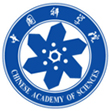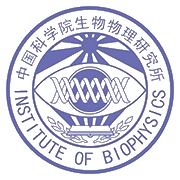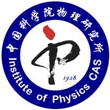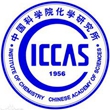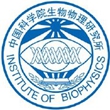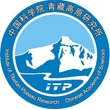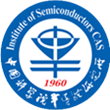Sessions 2:Chemical Sciences
K. Barry Sharpless
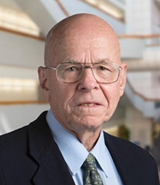
Character introduction
Experience of education
Dartmouth College, B.A., 1963, research supervisor Thomas A. Spencer
Stanford University, Ph.D., 1968, organic chemistry, supervisor Eugene E. Van Tamelen
Stanford University, Postdoc, 1968, inorganic/organometallic chemistry, supervisor James P. Collman
Harvard University, Postdoc, 1969, enzymology, supervisor Konrad E. Bloch
Positions
Massachusetts Institute of Technology faculty1970-7, 1980-90, Arthur C. Cope Professor from 1987
Stanford University faculty, 1977-80
The Scripps Research Institute (TSRI) faculty, W. M. Keck Professor, 1990-
Skaggs Institute for Chemical Biology at TSRI, 1996-
Research and achievements
K. Barry Sharpless is best known among synthetic chemists for discovering and developing many widely used catalytic oxidation processes, especially the work for which he received a Nobel Prize in 2001, the first general methods for asymmetric oxidation—the Sharpless reactions for asymmetric epoxidation(1980, dihydroxylation (1988), and aminohydroxylation (1996).
Among a newer generation of scientists representing the entire chemical spectrum, from chemical engineering and materials to chemical biology, Sharpless is known for click chemistry, a term he coined in 1998. Inspired by the complexity nature achieves from a handful of building blocks, Sharpless started actively looking in the mid-90s for a way to discover new chemical connectivity and reactivity. Click chemistry did not gain momentum until his group's discovery of CuAAC (the copper-catalyzed azide]alkynecycloaddition), a near-perfect reaction (2002). Recently the Sharpless group discovered SuFEx, also near-perfect for click chemistry. In concert with the thiol-ene reaction, these three make click chemistry a far-reaching method for discovery chemistry.
Dartmouth College, B.A., 1963, research supervisor Thomas A. Spencer
Stanford University, Ph.D., 1968, organic chemistry, supervisor Eugene E. Van Tamelen
Stanford University, Postdoc, 1968, inorganic/organometallic chemistry, supervisor James P. Collman
Harvard University, Postdoc, 1969, enzymology, supervisor Konrad E. Bloch
Positions
Massachusetts Institute of Technology faculty1970-7, 1980-90, Arthur C. Cope Professor from 1987
Stanford University faculty, 1977-80
The Scripps Research Institute (TSRI) faculty, W. M. Keck Professor, 1990-
Skaggs Institute for Chemical Biology at TSRI, 1996-
Research and achievements
K. Barry Sharpless is best known among synthetic chemists for discovering and developing many widely used catalytic oxidation processes, especially the work for which he received a Nobel Prize in 2001, the first general methods for asymmetric oxidation—the Sharpless reactions for asymmetric epoxidation(1980, dihydroxylation (1988), and aminohydroxylation (1996).
Among a newer generation of scientists representing the entire chemical spectrum, from chemical engineering and materials to chemical biology, Sharpless is known for click chemistry, a term he coined in 1998. Inspired by the complexity nature achieves from a handful of building blocks, Sharpless started actively looking in the mid-90s for a way to discover new chemical connectivity and reactivity. Click chemistry did not gain momentum until his group's discovery of CuAAC (the copper-catalyzed azide]alkynecycloaddition), a near-perfect reaction (2002). Recently the Sharpless group discovered SuFEx, also near-perfect for click chemistry. In concert with the thiol-ene reaction, these three make click chemistry a far-reaching method for discovery chemistry.
Topic: Biological Applications of SuFEx Click Chemistry
Abstract SuFEx, a new family of click chemistry reactions developed in my laboratory in 2014, relies on commercially available Vikane (sulfuryl fluoride, SO2F2) and ethenesulfonyl fluoride (ESF) to build diverse chemical structures bearing the SVI-F motif, such as -OSO2F (fluorosulfate) and -SO2F (sulfonyl fluoride). Since its development, SuFEx has found applications in materials science, chemical biology and drug discovery. Arylfluorosulfates can be easily synthesized from phenol precursors and SO2F2 in the presence of an organic base via SuFEx. Arylfluorosulfates are usually stable in a biological environment, but become activated upon encountering a specific protein partner that possesses amino acid residues which can either react with fluorosulfate or facilitate the fluoride departure. This interaction leads to the formation of a covalent linkage between the protein partner and the probe. In this talk, I will discuss our recent efforts using this new approach to discover small molecules with anti-viral and anti-cancer activities.
KEY WORDS: SuFEx,Click chemistry,drug discovery
REFERENCES(for example)
1. J. Dong, L. Krasnova, M. G. Finn, K. B. Sharpless*, Sulfur(VI) Fluoride Exchange (SuFEx): Another Good Reaction for Click Chemistry, Angew. Chem. Int. Ed. 2014, 53, 9430-9448.
2. J. Dong, K. B. Sharpless*, L. Kwisnek, J. S. Oakdale, V. V. Fokin*, SuFEx-Based Synthesis of Polysulfates., Angew. Chem. Int. Ed. 2014, 53, 9466–9470.
KEY WORDS: SuFEx,Click chemistry,drug discovery
REFERENCES(for example)
1. J. Dong, L. Krasnova, M. G. Finn, K. B. Sharpless*, Sulfur(VI) Fluoride Exchange (SuFEx): Another Good Reaction for Click Chemistry, Angew. Chem. Int. Ed. 2014, 53, 9430-9448.
2. J. Dong, K. B. Sharpless*, L. Kwisnek, J. S. Oakdale, V. V. Fokin*, SuFEx-Based Synthesis of Polysulfates., Angew. Chem. Int. Ed. 2014, 53, 9466–9470.
Previous first_page
Next Kuiling Ding
